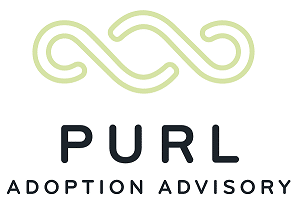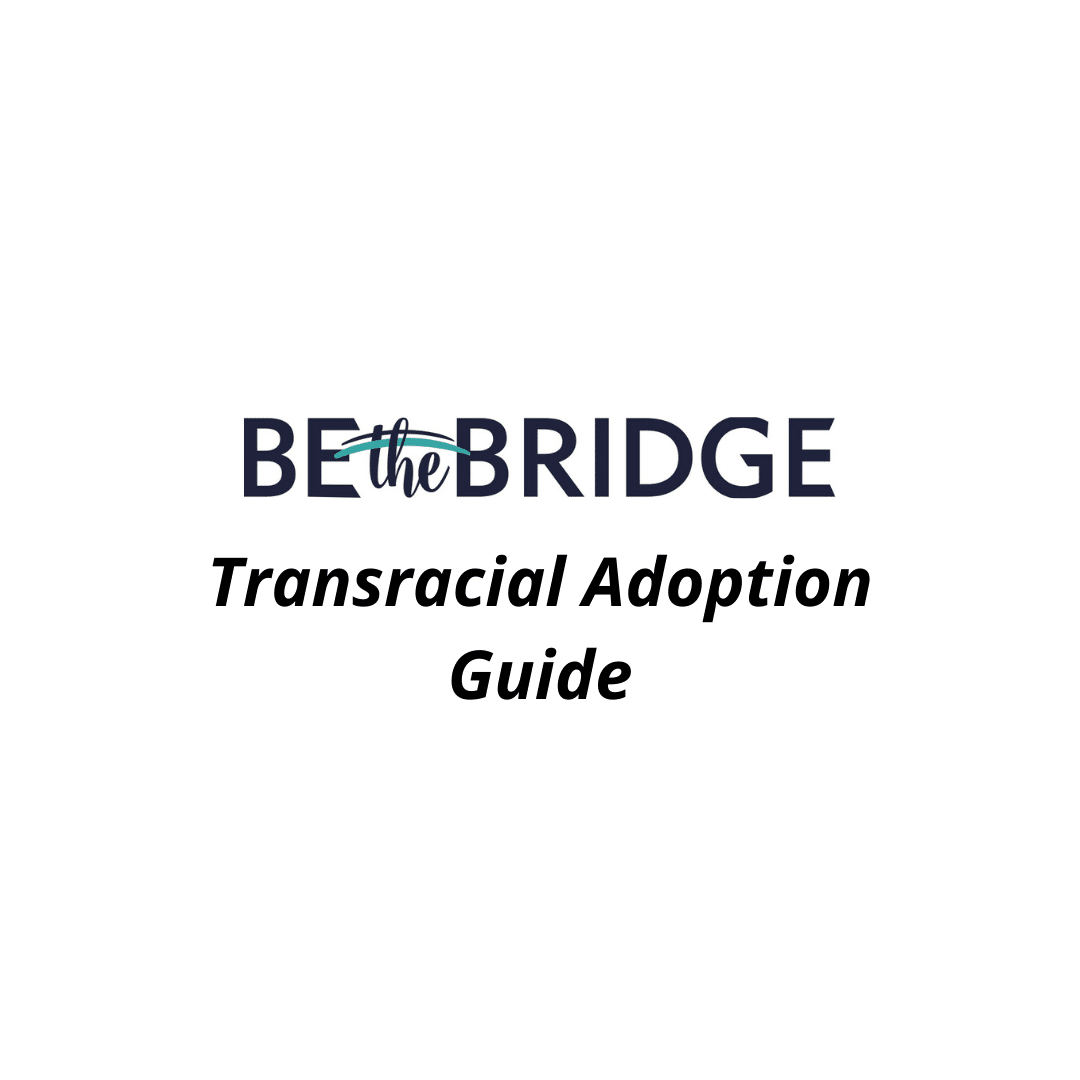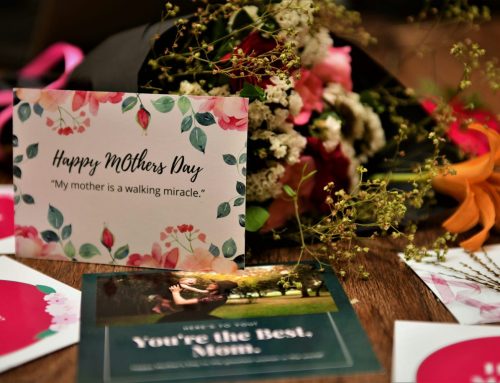Today’s blog post is written by Gina Fimbel, MSW, an educator with Be the Bridge, an organization created to empower people and culture toward racial healing, equity and reconciliation. In her post, she explains more about their organization as well as their Transracial Adoption Guide that can help prospective adoptive families considering transracial adoption, or families who have already adopted transracially.
—-
Unlike any other year in recent history, 2020 has revealed persistent racial inequalities in our nation. Sadly, it is also a reality that racism exists in the systems of adoption and foster care. Researchers have documented the overrepresentation of particular racial and ethnic populations – including African American, Latinx, and American Indian/Native American children – in the child welfare systems. The extent to which these populations are affected vary greatly from state to state. Overall, however, certain trends have been identified that point to failures in our child welfare system.
Best adoption practices should evolve and change as new information and perspective is discovered. As Maya Angelou has famously said, “Do the best you can until you know better. Then when you know better, do better.” Adoption is both wonderful and difficult, and many adoptive parents report that it is more difficult than they ever imagined.
At Be the Bridge, we know many loving transracial adoptive families and we have created a guide to help transracial adoptive parents and professionals think more intentionally about adoption, race, and the choices they make.
An adoptive parent’s narrative has often sounded something like this: “Love is all we need. Love doesn’t see color. Love is enough. There is no special skill or training needed to be a parent – only love.” If you have been part of the adoption world for any length of time, it is likely you have heard similar sentiments. These sentiments from adoptive parents, particularly white transracial adoptive parents, reveal a naivete that many adult adoptees report have caused them harm. As the practice of transracial adoption has increased in recent decades, these adoptees are now speaking up about their experiences. It is clear that what has been missing from the conversation about adoption are the voices of adoptees themselves.
We whole-heartedly believe in elevating the voices of adult transracial adoptees above all others because they are the only experts about the lived-experience of being adopted into white families.
In order to meet the needs of their children, it is wise for transracial adoptive parents to be equipped with more than good intentions. Parenting a child of color brings unique and heightened considerations and responsibilities in a racialized society. Because white people have not been confronted with the reality of living as a person of color, it is crucial to actively engage and educate yourself about the history and experiences of Black, Indigenous, and other people of color in the United States.
Parenting any child — adopted or not — requires knowledge, humility, intuition, and growing wisdom and skill. Parenting a child who is adopted requires additional, specific knowledge about the intricacies of how adoption will inform a child’s experience. Parenting a child who is adopted and being raised in a family with a different racial background is yet another unique and specialized reality that requires additional considerations to help ensure that a child will grow to be an adult who finds joy and meaning in their life.
As we seek to do the right thing by our children or future children, it is crucial for adoptive parents to recognize the moral obligations that accompany the privilege to adopt. Many conversations surrounding the practice of transracial adoption either pathologize it and view it as psychologically damaging (to the adopted child) or idealize it, completely dismissing or minimizing race as an important factor to consider in the child’s life. We believe both of these views fall short of representing the picture of transracial adoption and its potential for both painful and positive personal and familial growth and transformation. Transracial adoption can be a healthy and beautiful experience, and it can be one wrought with pain and trauma. This is not an either/or but a both/and. It is important to recognize that the pain of adoption does not erase the good things that come from it, but it is also important to recognize that the good things do not erase the pain and trauma.
With Be the Bridge as your guide, you’ll be taking a deeper look at the world of transracial adoption. Whether you are an adoptive parent, prospective adoptive parent, adoption professional, or simply someone who cares about the well-being of a child who has been transracially adopted, we believe this will prove to be a valuable resource. You can purchase the guide here.
—-
Here are some more posts from us on transracial adoption, including a perspective from a transracial adoptee and a family that has adopted transracially. Also, click here for resources on hair care for transracial adoption of a Black child.
Today’s blog post is written by Gina Fimbel, MSW, an educator with Be the Bridge, an organization created to empower people and culture toward racial healing, equity and reconciliation. In her post, she explains more about their organization as well as their Transracial Adoption Guide that can help prospective adoptive families considering transracial adoption, or families who have already adopted transracially.
—-
Unlike any other year in recent history, 2020 has revealed persistent racial inequalities in our nation. Sadly, it is also a reality that racism exists in the systems of adoption and foster care. Researchers have documented the overrepresentation of particular racial and ethnic populations – including African American, Latinx, and American Indian/Native American children – in the child welfare systems. The extent to which these populations are affected vary greatly from state to state. Overall, however, certain trends have been identified that point to failures in our child welfare system.
Best adoption practices should evolve and change as new information and perspective is discovered. As Maya Angelou has famously said, “Do the best you can until you know better. Then when you know better, do better.” Adoption is both wonderful and difficult, and many adoptive parents report that it is more difficult than they ever imagined.
At Be the Bridge, we know many loving transracial adoptive families and we have created a guide to help transracial adoptive parents and professionals think more intentionally about adoption, race, and the choices they make.
An adoptive parent’s narrative has often sounded something like this: “Love is all we need. Love doesn’t see color. Love is enough. There is no special skill or training needed to be a parent – only love.” If you have been part of the adoption world for any length of time, it is likely you have heard similar sentiments. These sentiments from adoptive parents, particularly white transracial adoptive parents, reveal a naivete that many adult adoptees report have caused them harm. As the practice of transracial adoption has increased in recent decades, these adoptees are now speaking up about their experiences. It is clear that what has been missing from the conversation about adoption are the voices of adoptees themselves.
We whole-heartedly believe in elevating the voices of adult transracial adoptees above all others because they are the only experts about the lived-experience of being adopted into white families.
In order to meet the needs of their children, it is wise for transracial adoptive parents to be equipped with more than good intentions. Parenting a child of color brings unique and heightened considerations and responsibilities in a racialized society. Because white people have not been confronted with the reality of living as a person of color, it is crucial to actively engage and educate yourself about the history and experiences of Black, Indigenous, and other people of color in the United States.
Parenting any child — adopted or not — requires knowledge, humility, intuition, and growing wisdom and skill. Parenting a child who is adopted requires additional, specific knowledge about the intricacies of how adoption will inform a child’s experience. Parenting a child who is adopted and being raised in a family with a different racial background is yet another unique and specialized reality that requires additional considerations to help ensure that a child will grow to be an adult who finds joy and meaning in their life.
As we seek to do the right thing by our children or future children, it is crucial for adoptive parents to recognize the moral obligations that accompany the privilege to adopt. Many conversations surrounding the practice of transracial adoption either pathologize it and view it as psychologically damaging (to the adopted child) or idealize it, completely dismissing or minimizing race as an important factor to consider in the child’s life. We believe both of these views fall short of representing the picture of transracial adoption and its potential for both painful and positive personal and familial growth and transformation. Transracial adoption can be a healthy and beautiful experience, and it can be one wrought with pain and trauma. This is not an either/or but a both/and. It is important to recognize that the pain of adoption does not erase the good things that come from it, but it is also important to recognize that the good things do not erase the pain and trauma.
With Be the Bridge as your guide, you’ll be taking a deeper look at the world of transracial adoption. Whether you are an adoptive parent, prospective adoptive parent, adoption professional, or simply someone who cares about the well-being of a child who has been transracially adopted, we believe this will prove to be a valuable resource. You can purchase the guide here.
—-
Here are some more posts from us on transracial adoption, including a perspective from a transracial adoptee and a family that has adopted transracially. Also, click here for resources on hair care for transracial adoption of a Black child.




